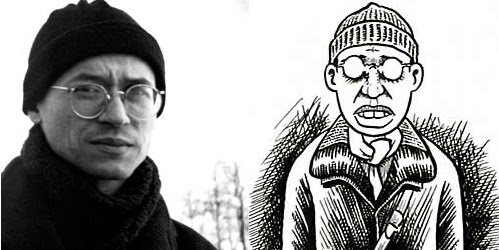Hello again!
Lately my class has been going over Joe Sacco’s Safe Area Gorazde. The book is a graphic narrative of Sacco’s time in Bosnia during the Bosnian war. It depicts his time in Gorazde as an American journalist allowed entry through the United Nation’s, and his interviews with the people living there. More specifically, the book provides readers insight into the lives of Bosnian Muslims during the war, and Sacco’s own experience within Gorazde.
The book has a particular drawing style that I wish to discuss with this blog. This drawing style was something I found peculiar, even unappealing when I first started reading. After having read Marjane Satrapi’s Persepolis, and being used to the drawing style usually associated with comics and manga, I found Sacco’s style jarring. After having been accustomed to seeing Satrapi’’s almost childish drawing style (that reflected Persian miniatures), reading Safe Area Gorazde and seeing Sacco’s drawing style gave me a rather unfavourable first impression.
However, as I continued reading, I found that the style suited the narrative very well. It wasn’t drawn to look nice or pleasing to the eye, it was drawn to be as realistic as Sacco could make it to take on a realism as it told Sacco’s story. The realistic way Sacco draws everything – the people, the violence, the injuries, the wreckages of homes – is showing readers that these are real events that happened. It shows that what Sacco has drawn is a reality, that it is history.
The style uses simple shading techniques, and depicted people in a realistic but strangely cartoonish way. The way Joe Sacco draws himself may be called caricatural, as he exaggerates his features.

Joe Sacco (Real life and drawing of himself)
But the way he draws other people – Edin, Riki, and Sabina, to name a few – is very detailed and fairly realistic, as mentioned before. He makes the effort to draw their wrinkles, their frown lines, their teeth as they grin. All together, the amount of detail he puts into work is astonishing. It also allows readers to clearly see emotions in their expressions. I would say that he draws them like this to depict them as real people, and not just statistics or interviewees. They are the people within Gorazde, all with their own emotions and stories.
The way Sacco draws himself, on the other hand, is something I am still in debate about. Does Sacco draw himself caricature-like for ironic, self-mocking reasons? Or is it a way for readers to differentiate Sacco from the people of Gorazde? That he is not wholly part of, or entrenched, in the reality of Gorazde like Edin and the rest?